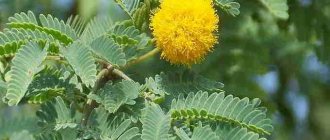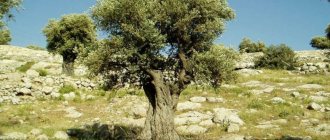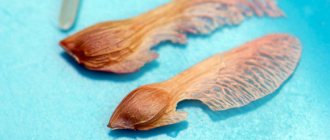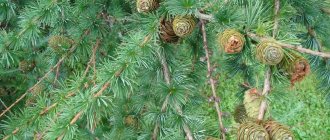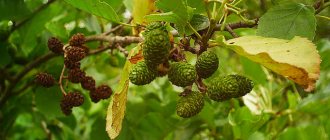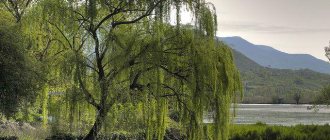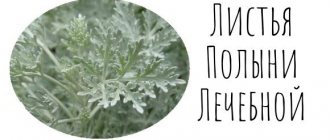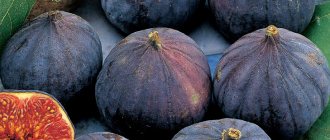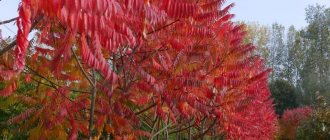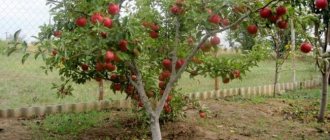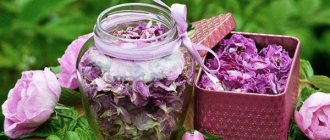Places of growth
The eastern beech tree is common in the Crimea, where at a level of 1000 meters it forms a forest belt.
Beech grows in the Kaliningrad region, Crimea, Belarus and Ukraine. Close to eastern beech.
In addition, forest beech is found in Europe, America, Japan and China. It grows mainly in gorges, along river banks, on mountain slopes, and sometimes on plains. Beech forests grow at an altitude of approximately 500 meters above sea level. The maximum age of beech reaches 500 years.
Every year, a hectare of beech forest releases about 5 thousand tons of vapor into the atmosphere - hence the fog rising above the forest and cloudiness. And since deciduous trees have a higher need for water than resinous ones, they noticeably increase atmospheric humidity, thereby exerting a profound regulating influence on the climate. This means that massive deforestation automatically entails long-term climate changes, in most cases unfavorable.
Most species live in the temperate climate zone of North America and Eurasia. Distributed everywhere in areas up to 2500 m above sea level. Prefer fertile soils. Beeches dominate in mixed and deciduous forests. Thick dark tree crowns shade low trees and shrubs. Usually, only a perennial grass substrate can be found near the trunks.
Trees are insensitive to lack of lighting and love moist, warm air. They cannot tolerate cold winds, prolonged winter frosts, or polluted atmospheres.
Decorative types of beech
Eastern beech
Inhabits vast territories in the Crimea, the Caucasus, and the northern part of Asia Minor. It grows in various reserves of the European part of the Russian Federation, the Caucasus and Crimea. Forms pure forests and grows next to broad-leaved species on fertile lands. It is an extremely shade-tolerant mesophyte.
Tree up to 50 m tall, with an extensive round or oval crown . Very close to forest beech, but with a more even crown, more large, elongated leaves up to 20 cm in length and a slightly different perianth structure. Sometimes it can produce root shoots and rich first growth. Regarding environmental factors, they are also similar, with the exception of one thing: the oriental beech is more heat-loving. Lives 300-500 years. It has been celebrated in culture since 1904. It is successfully combined in compositions with the following plants:
- chestnut,
- eastern spruce,
- Weymouth pine,
- oaks and other species.
One sample (4 copies) was included in the GBS in 1956, marked “of unknown origin . Has the following description:
- This is a shrub, at the age of 22 years it has a height of 7.5 m, with a crown diameter of 300 cm.
- The growing season lasts 169 days.
- The first three years of life are characterized by an average growth rate.
- Doesn't bloom.
Frost resistance is average. Only 12% of cuttings take root. Has decorative properties. Need for continued testing.
It can also be noted that the fruits of this type of beech are stored for spring sowing in half-damp sand, for autumn - in woven bags in a non-damp and unheated room. Germination is stored until the spring of the next year. Soil germination rates are 76-86%. The embedment depth is 5-7 cm.
Botanical certificate
A deciduous tree can grow and develop in one place for several centuries.
Beech forests of different types of trees are common on different continents. Beech can be found on the European continent; large-leaved beech is more common in North America. Beech trees are endemic to China and Japan, the Chinese variety of the tree is B. Englera, in Japan there are two species - B. Japanese blue and B. jagged.
A beech tree often reaches a height of up to 30 m, the girth of the trunk can exceed 2 m. An adult growing beech is a giant tree, its trunks, gray in color, are covered with smooth bark. Almost to the very top with a powerful crown, beech stems have no branches. This tree has such a dense crown that the lower branches are never illuminated by the sun, and therefore the process of photosynthesis is disrupted. This is why the lower branches gradually die off, leaving the beech trunk bare.
Beech leaves have the shape of an oblong oval, the edges are often decorated with serrations or frequent teeth. The length of the leaves ranges from 5 to 15 cm, the width often reaches up to 10 cm. The leaves fall off in winter.
Beech giants bloom in spring; the color is loose catkins that emerge from the buds simultaneously with the leaves. Pollination of flowers occurs with the help of wind, and fruiting may occur late. Single strong specimens bear fruit after 20-40 years, in group plantings - by 60 years.
The beech tree is a long-liver; some individuals reach a respectable age of 400 years or more.
The beech harvest is ripening in boxes.
Beech fruits are similar to a triangular acorn measuring up to 15 mm. Beech nuts are covered with a hard wooden shell; the seeds ripen in 2-4 pieces in a common nest box. Fresh beech fruits are suitable for propagation of the crop.
Usage
Beech is widely cultivated in Russia, which is planted for landscaping urban areas and is also used to form figured hedges. The culture is often included in group park plantings when creating a green landscape. Dense foliage makes this crop most suitable for planting in areas where industrial enterprises are located.
Where beech grows, the soils are protected from erosion, siltation and flooding. The branched root system of beech trees helps to increase soil fertility, saturating the soil layer with organic matter and inorganic compounds.
Beech wood is valuable for the furniture industry; curved parts of Viennese chairs, curly backs of sofas and other products are made from it. Beech wood is used to make musical instruments, plywood, parquet boards, and finishing veneer. Processing of beech raw materials is used in the production of alcohol and beer.
Beech wood takes on a unique pink color over time, but is only allowed to be used indoors.
Most beech species are distinguished by columnar, tall, powerful trunks up to 2 m thick. During their life, many trees grow up to 35–40 m. The root system is widely branched, with several anchor roots penetrating to great depths. There are no central rods. Old trees have developed root claws, giving them a stumpy appearance; there are grooves and hollows in the lower parts of the trunks. The bark of beech trees is light gray and quite smooth.
In the first 100 years of life, trees stretch upward, then begin to expand in width. Slender straight trunks are crowned with tent-shaped spreading crowns. In areas of dense thickets, the lower shoots are drowned out by the more developed upper shoots, deprived of sunlight, and gradually die off. Therefore, the green part of the trees in forests is located at a high altitude from the ground. Solitary plants are more picturesque.
The buds are elongated and appear on the shoots at the end of January and February. The leaves are dark green, alternate, arranged in two rows, and quite large. They have an elliptical shape, pointed tops, and wavy or finely toothed edges. The front part is smooth with pronounced feathery veins, the back part is slightly pubescent. In autumn, the greenery takes on a beautiful golden or bronze hue.
The trees are monoecious. Male and female small axillary flowers are collected in small earring-shaped inflorescences, blooming in the spring simultaneously with the leaves. The fruits are brown triangular nuts about 1.5 cm in size. Each of them contains 2 seeds.
Beech tree: description
A tree up to fifty meters high is rightfully considered a long-liver. Beech lives to a very old age - 500 years. Quite rarely grows alone, often forming forests or groups in mixed forests. The heat-loving and shade-tolerant deciduous tree has a powerful crown, which is rounded at the top.
The trunk is columnar, on average the diameter of mature trees is about one and a half meters, and centuries-old specimens have trunks with a diameter of about three meters. The crown is broadly cylindrical or ovoid, raised high above the ground.
Reproduction and cultivation
Beech grows very slowly. It is a very shade-tolerant and at the same time heat-loving tree. Beech is demanding of soil moisture and can hardly tolerate drought; it prefers to grow on calcareous soils.
As mentioned above, beech belongs to the Beech family. We can safely call this family “long-livers”: Beech trees for the most part live up to almost five hundred years! However, these trees have a low level of frost resistance. Beech needs a warm, protected place. Southern areas are preferred for the spread of beech trees, otherwise they may freeze slightly.
The beech tree propagates by seeds, cuttings and layering. European beech is used not only to create powerful plant tracts in parks, but also in single plantings. Beech makes excellent hedges. They can be trimmed and given different shapes. This tree has long found its place in cultivated places.
Beech combines well with other trees - pine, white fir, hemlock, common spruce, yew, juniper, rowan, plane tree, birch, oak, hazel and others. Beech is often planted for decorative purposes because it lends itself well to shaping: it can be easily trimmed. These trees are used to create all kinds of geometric shapes. They are perfect for decorating high hedges not only in parks, but also in private residential areas.
When planting a beech tree in the garden, it is useful to remember that the plant can live in one place for centuries, requiring more and more free space around the trunk every year. Beeches can grow well in partial shade and full sun, but for favorable growth it is necessary to choose places protected from the wind for planting.
In the southern regions, the crop does not feel well in the summer heat; it is useful to frequently water the beeches and spray the crown.
The tree is undemanding to soil, but it is necessary to allocate the most humid area with fertile soil for planting beech seedlings. The crop reacts negatively to soil salinity and prefers fertile loams with the addition of lime.
Spring flowering of beech tree.
Beeches are sensitive to changes in temperature; the tree feels depressed when the air temperature drops below -5C. In northern regions, this crop should not be planted for outdoor cultivation. Considering that the tree reaches a considerable height, it is unrealistic to provide shelter for the trunk for the winter, so beeches should not be grown in the middle zone.
After planting beech seedlings in open ground, it is necessary to provide young trees with regular watering and spraying. To reduce the growth of weeds and the evaporation of moisture from the tree trunk, it is worth mulching the soil under the planted trees.
Fertilizer for deciduous trees is applied to the tree trunks in early spring and late autumn.
Reproduction
Autumn beech forest.
To propagate beech, you can use basal shoots, which form in abundance near the stumps of felled trees 2-3 years after felling. The shoots are separated with part of the roots, after which the young tree is planted in a permanent place in a hole with good fertile soil. The dimensions of the planting hole must correspond to the size of the roots. After planting, the tree is watered abundantly. In the first years after planting, young beeches grow very difficult, reaching their greatest height by 50 years.
Beech nuts ripen on mature trees that have already reached the age of 60-80 years. They can be planted in greenhouses in light fertile soil in the spring. Sometimes root growths form on nuts when stored in a damp room. It is very important to plant beech seeds in the ground in time, before the root seedlings dry out. You can speed up the germination of beech nuts by soaking them in stimulating solutions (Epin, Gumate, Zircon, aloe juice).
Young seedlings should be shaded from the burning summer sun, the plants should be provided with uniform, abundant watering, and when grown in separate pots, strictly monitor the increase in the volume of the container as the roots grow.
It is difficult to describe the magnificence of an adult beech tree, because such power and beauty of luxurious foliage distinguishes this spectacular deciduous plant from other inhabitants of the park area; beech trees are especially beautiful in the fall, when the leaves are painted in all the colors of the fiery yellow palette.
Planting and caring for beech
You can also grow beech in your summer cottage. This is a very shade-tolerant crop that can withstand even prolonged exposure to the shade. However, the plant also feels comfortable in the sun. The beech tree does not tolerate drought and needs abundant watering. It is not demanding on the soil; wet and dry, slightly acidic and alkaline soils are suitable for it - at least somewhat fertile soils. Planting work usually begins in the spring.
Preparing seedlings and planting area
Despite the fact that beech can grow on almost any soil, it prefers loamy, limestone soil. Beech is negatively affected by contaminated and saline soil. It is better to purchase beech seedlings in specialized stores, but you can also germinate them yourself from seeds.
How to plant beech
The main thing when planting beech is to choose the right time; seedlings are planted in the spring before the first buds appear. Otherwise, the tree will have weak immunity to diseases and grow slowly.
- Dig a hole measuring 80 by 80 cm. Larger holes will help the roots grow faster.
- Drain the beech planting hole using stones.
- Add fertilizers that stimulate active growth of the root system.
- Place the beech seedling in the planting hole.
- Sprinkle with soil and water thoroughly.
- To better preserve the soil, the surface around the trunk of a young beech must be mulched with dry grass.
Landing
Beeches prefer loose, neutral, slightly acidic or alkaline soils. Highly saline soils are not suitable for them. For planting, you should choose areas protected from the wind. It is recommended to add lime additives to the soil.
It is better to plant trees in the middle climate in early April, before the active growing season. Autumn plantings may not have time to take root before severe cold weather.
The holes are prepared with a depth and width of about 80 cm. When creating group plantings, a distance of about 1.5 m is left between plants. A drainage layer of small stones is laid at the bottom. After placing the seedlings, the soil is lightly compacted and watered abundantly. It is advisable to cover the tree trunk areas with a layer of moss, grass or mulch with peat.
History of beech breeding
In the printed registers of the Botanical Garden of St. Petersburg, the beech is practically not mentioned; there are only brief notes dated 1796, which say that the tree is being studied and attempts are being made to breed it. In 1824 it was mentioned that some of its species were grown in potted arboretum and greenhouses. The first reliable experiment on growing trees of this species in open soil belongs to F. Fischer, who has been studying beech since 1833.
In his further notes it was noted that the forest beech died in 1834, its red-leaved species was also noted in the notes - after 1835. Subsequently, they were grown only in potted arboretum (after 1873). At the beginning of the 20th century, until 1917, beech was already planted in medicinal plant plots and in permanent areas in parks. Their secondary introduction into cultivation in open soil in the early 1930s was especially successful. XX century. The trees were under the close attention of breeders until 1935-2005.
Another type of beech was imported from the city of Achishkho from the Caucasus (specifically from Krasnaya Polyana) in 1930, they were engaged in its selection for eight years, in 1938 it was planted in the park, however, apparently, until 1942, it unfortunately, he died. It was reintroduced into collection plantings in 1949-1976, and then again in 1980-2006.
Harvesting and collection
To harvest beech wood, you need to carefully cut off a small part of it with a sharp object. This is usually done in September-October. Then the wood is cut into small pieces and placed to dry in a well-ventilated place, for example, under a simple canopy.
Wood needs to be turned over sometimes. This is necessary so that it does not become damp and moldy. After the raw materials are completely dry, they are placed in paper bags and then stored in a ventilated, dry room for storage.
As mentioned above, the beech tree has fruits - nuts. They are harvested at the end of September when they reach maturity. Then they are laid out in a thin layer on a tray located in a ventilated place. This place should be protected from children. It should not be in a house where people live, otherwise the whole family may suffer due to poisoning. Beech trees contain a toxic substance - the alkaloid fagin.
The raw materials must sometimes be turned over, thus ensuring high-quality and quick drying. After the nuts have dried, they are packed into bags, which are then placed in a ventilated room.
Biological characteristics of the plant and species
The beech tree is a member of the Beech family, which has about 1,000 different plant species. It has a slender trunk, columnar in nature, decorated with a spherical crown. On hot summer days, almost no sunlight penetrates through it, so you can hide from the heat in the shade.
On the thin branches of the tree grow jagged leaves of an oblong shape, resembling an elongated ellipse. During the cold season they fall off. During flowering on a beech tree, the description and photo of which is provided below, cute earrings appear.
They are pollinated by strong winds. In dense forests, where there is little light, the moment of fruit appearance occurs after 60 years.
They are nuts, up to 15 cm in size. For a long time, people considered them edible, so they took them for food. Beech grows well in shady areas. Prefers loamy soils. Does not like low temperatures.
The tree tolerates pruning wonderfully, so it can be used as a hedge in the garden.
Various types of beech trees are found in the natural environment. Let's look at the most popular of them.
Beech Gorodchaty
This type of beech is distinguished by a dense crown, which is most often round in shape. Large leaves reach a length of 10 cm. It mainly grows on the Japanese islands and is the dominant tree in forest plantations. Beech grows up to 35 m in height.
Large-leaved beech
Representatives of this species grow up to 25 m. The maximum diameter of the trunk is approximately 100 cm. The ellipsoidal leaves have a pointed tip. There are specimens over 12 cm in length. The color of the leaf blade in summer is green with a blue tint. In autumn it changes and they acquire a bright crimson color. The homeland of the species is considered to be the eastern part of North America. The tree came to Europe in the 18th century as an ornamental plant for city parks. It can often be found in forests next to maple, linden or birch.
Beech European
This is the name of the most common type of beech tree found in Europe. They form forests, are found in urban parks, and are grown in botanical gardens. A distinctive feature of the majestic plant is its cylindrical crown with a round top. This is achieved thanks to thin branches densely planted on a thick trunk. The unique properties of the beech tree allow its wood to be used for making furniture, and its fruits in cooking. The plant looks wonderful at any time of the year:
- in spring it attracts with its silky foliage;
- in summer - bluish crown;
- when autumn comes, they light up in bright burgundy shades;
- In winter, the tree resembles a majestic forest guardian.
It is for this that beech is valued by lovers of green spaces.
Buk Vostochny
This species is widespread along the Black Sea coast and on the slopes of the Caucasus Mountains. The suitable territory where the beech tree grows in Russia is the Crimean peninsula and its westernmost part (Kaliningrad region). These places have a mild climate with no severe frosts.
Beech Japanese
The species is found on the Japanese islands and Korea. It is often called "Japanese Blue Beech". It grows to a height of 15 m and can have several trunks. The peculiarity of the species is the pubescent leaves, the length of which is 6 cm. They resemble an ellipse in shape. The top is pointed. The lower part of the plate is grey-gray.
Beech Englera
This beech tree can grow up to 20 meters in height. It is distinguished by a wide oval crown, which is obtained due to many branches. The peculiarity of the species is the elongated shape of the leaf plate. The tree is found mainly in China, and only occasionally in park areas of European countries.
Beech Shining
This type of beech is distinguished by the specific shine of its bark. The tree grows to a height of 25 meters. It has a rounded crown of lush branches. Every year, an adult tree bears fruit in the form of small nuts, which birds and small animals love to eat.
Foliage and beech bark contain many useful elements. It is better to dry medicinal raw materials away from direct sunlight. The ideal place is an attic with good ventilation.
Care
The first fertilizing is carried out during planting. Equal parts of nitrogen and potassium-phosphorus fertilizers are added to the soil. In the future, it is necessary to provide the seedlings with organic matter and minerals. Every 3 weeks you can water the plants with a liquid solution of mullein.
Beeches are very sensitive to lack of moisture. It is recommended to water them during the first 2–3 years throughout the warm season: every 15 days at the rate of 15 liters of water per 1 tree. In hot summers it is useful to spray the crowns with a small watering can.
For the winter, the roots of young beeches are covered with a thick layer of sawdust and spruce branches. In frosty weather, the crowns are wrapped in burlap.
In the first few years, beeches grow very slowly. In the fourth year, they usually begin to quickly grow in height, up to half a meter per year. From this period you can start shaping haircut. Frosted branches are cut off annually in early spring.
European beech in landscape design
European beech is used to design forest and park areas. It is planted alone or in combination with other species. Beech is suitable for forming hedges and decorating lawns.
Interesting! Forest beech is grown in the art of bonsai.
The most successful combinations of forest beech are with deciduous trees and shrubs: yew, juniper, hornbeam, rowan, oak, hazel, euonymus. For contrasting compositions, they practice planting next to conifers: common spruce, white fir, juniper.
Decorative varieties of forest beech differ from the original form in appearance, bark structure, size and color of leaves.
The most popular varieties of European beech in landscape design are:
- Atropurpurea. European beech is up to 20 m high; in the middle zone it grows as a shrub. When blooming, the leaves of the tree are pinkish-orange in color, then turn purple. The bark of the plant is light, smooth;
- Dawyck Gold. A spectacular variety of forest beech with a narrow columnar crown. In summer, the foliage of the forest beech Davik Gold is bright green in color, and by autumn it turns yellow. The height of this European hybrid reaches 15 m;
- Tricolor. A European variety of forest beech up to 10 m high. In spring, the leaves are green with a light border; in autumn they become purple. The crown is wide and spreading. The annual increase is small;
- Pendula. Compact forest beech of weeping type with purple leaves. The tree reaches a height of 5 - 10 m. The annual growth of the plant is no more than 15 cm. The crop tolerates frost well and requires an abundance of moisture and light.
Application
The substance creosote present in this plant is used as an external remedy, since it has a disinfecting and cauterizing effect. In addition, it is used for inhalation for chronic respiratory diseases, for example, bronchitis.
Creosote has a specific, very unpleasant odor and taste. This substance is irritating to the stomach and also to the kidneys. It is often replaced with guaiacol and other drugs.
The Beech family is also famous for the fatty oil produced from its fruits. It is used in the food industry. At the same time, flour is made from the seeds of the plant, using it for baking. These seeds are also subjected to slight heat treatment in the form of roasting. In this form, they are used to create a coffee drink with excellent dietary characteristics.
Distribution[edit | edit code ]
Distributed in temperate, subtropical and partly tropical zones of Europe, Asia and North America. Beech enters the tropics in the mountains of Mexico (Mexican beech). Beeches are one of the most common trees in Europe. In the mountains they grow at altitudes of up to 2300 m above sea level [7]. Often dominate in deciduous and mixed forests.
The most widespread are Beech in Eurasia and Large-leaved Beech in North America. Engler's beech grows wild in China, its height reaches 20 m, and the trunk is divided into several branches forming a wide oval crown [12]. Two endemics of the Japanese islands have a similar trunk shape: Japanese blue and jagged (height up to 30 m) beeches. Mexican beech, as you might guess from the name, comes from Mexico - a tall (up to 40 m) tree with wedge-shaped leaves, used in wood processing.
Some species of the Southern Hemisphere, previously classified as beeches, are now classified into separate families of Nothophagaceae and the genus Nothofagus. These plants are native to Australia, New Guinea, New Zealand, New Caledonia and South America.
On the territory of the Russian Federation, in addition to the forest one, the eastern beech also grows - its natural habitat is in the Caucasus and Crimea.
Pests and diseases
Representatives of beech trees are often affected by aphids, scale insects, mole crickets, red-tailed caterpillars, moth moths, and forktail moths. When they appear, the shoots become eaten away, the leaves curl, darken, and become covered with spots.
Beeches are also affected by root rot, powdery mildew, ascomycetes, chaga and hundreds of other fungal diseases. The fact that a lesion has occurred is indicated by strange-looking dark growths or deep cracks on the bark and leaves covered with a whitish coating.
For treatment and prevention, plants must be treated with fungicides several times a season: “Coronette”, “Antrakol”, “Alyette”. To combat insects, insecticides are used: “Aktaru”, “Provado”, “Calypso”.
Beech is often compared with other valuable wood species: oak and larch, the material from which is considered a first-class raw material in the construction of low-rise and country buildings. Unlike larch and oak, beech is a softer species that is susceptible to a number of diseases.
During the growth process, beech can suffer from rotting of the root system, trunk cancer and other fungal diseases. In addition, valuable wood can be damaged by pine beetles, bark beetles, and animals and forest rodents that feed on young branches and tree bark.
Contraindications
Beech trees contain the toxic alkaloid fagin. This toxic substance is also found in raw nuts, which are not recommended for consumption. The alkaloid fagin disappears only when exposed to high temperatures.
Quite severe poisoning is possible in young children who eat nuts raw, as well as in adults with insufficient heat treatment.
It should be noted that poisoning with this product causes discomfort in the hypogastric region, general malaise, acute gastroenteritis, nausea, and headache.
In case of poisoning, you need to do cleansing enemas and gastric lavage.
Usage
Beech trees are used in landscaping parks, squares, gardens, suburban areas, and city streets. They are planted on slopes and along river banks. The dense greenery of trees actively produces oxygen, absorbs carbon dioxide, and creates a healthy microclimate in the places where they grow. Due to their low frost resistance (beeches freeze out at temperatures below -20 °C), difficulties arise when cultivating them in northern regions and sharply continental climates.
Beech wood is uniformly dense, tough, durable, and has a color ranging from almost white, beige and light pink to red, with a beautiful contrasting pattern. Before use, it is steamed to achieve an even shade. The density after drying is about 750 kg/m3. In terms of hardness, beech resembles oak, bends well, and can be processed. At the same time, the material is very capricious, warps easily, swells at high humidity, and is susceptible to fungal attack.
Used for the production of composite building and finishing materials, including fiberboard, parquet, veneer, and plywood. Furniture parts, containers, decorative kitchen utensils, picture frames and panels are cut from beech. Wood waste is used as fuel and for the production of cellulose.
All parts of the tree contain volatile essential oils, organic acids, and tannins. Alkaloids and fatty oil were found in the seeds. From dried leaves and crushed bark, products are made to reduce sugar, blood cholesterol levels, treat diseases of the respiratory tract, liver, gall bladder, inflammatory pathologies of the joints, improve body tone, improve blood circulation, eliminate nervous system disorders, and heal wounds.
Beech nut oil is used in cosmetology, adding to lotions, face masks, creams, and hair care products.
Paleobotanical information[ edit | edit code]
At the beginning of the Tertiary period, forests with beech, making up the so-called Turgai flora, were distributed from the Urals and the Aral Sea (even Bashkiria) to Sakhalin and Kamchatka. They covered most of Canada, Alaska and southern Greenland [13]. The Turgai flora replaced the large-leaved flora of the Early Paleogene due to cooling, as it was more adapted to existence in conditions of a moderately warm, humid climate. At the end of the Oligocene and Miocene, the Turgai flora in Eurasia spread to the south and southwest, gradually displacing the subtropical flora. In the Oligocene, the Turgai flora completely conquered the high latitudes, where then, due to further cooling, it was quickly replaced by a more temperate flora. It disappeared in most of the Boreal region (Boreal period), replaced by a flora consisting of coniferous and small-leaved tree species and various herbaceous plants that form the basis of modern vegetation of the Euro-Siberian and Atlantic-North American regions. The Turgai flora survived until the end of the Neogene in the south of Central and Eastern Europe, northeast China, the Korean Peninsula, Japan and the Appalachians [14]. In the Eopleistocene, during the climatic optimum phase, forests dominated by pine, which included many deciduous species, including beech, were widespread in the basins of the middle Volga and lower Kama. Beech is present in Eopleistocene deposits in the territories of the Northern Caspian region, the Northern Black Sea region and the Lower Don, Bashkiria and the Middle Volga region, the middle Dnieper basin, and the upper Neman basin.
Beech was part of the Pliocene flora in Florida and southern Alabama. Since it was not found in earlier deposits, it can be assumed that it migrated here from the more northern regions of America due to cooling. In Scotland and Ireland, the Turgai flora has existed since the Eocene. The Turgai flora was transformed through evolution into the modern flora of deciduous forests of the Northern Hemisphere [15]. Fossil evidence shows a very wide and uniform distribution of beech in the Northern Hemisphere during the Miocene [16]. According to other data, the presence of beech in Europe was established to be no younger than the Middle Pliocene [17].
